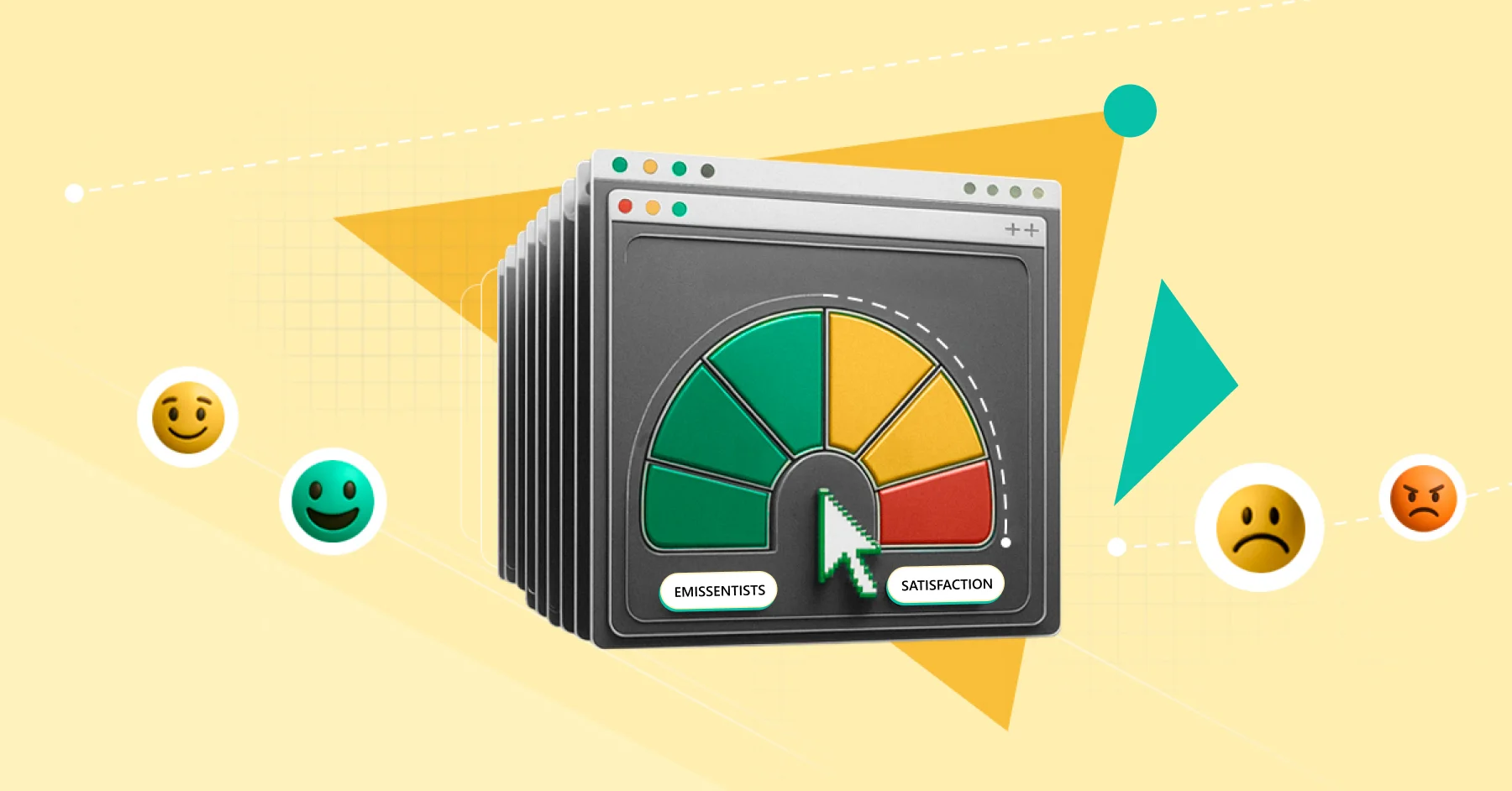It’s impossible to create loyal customers without first inspiring a team of employees, so they become promoters themselves. Who would go out of their way for a customer unless he or she is proud and inspired to be part of the team?
In today’s world, team loyalty is a kind of currency — not traded on the stock exchange, but one that determines your business’s value every single day. A company’s brand isn’t just about its external reputation as a product or service provider shaped through customer interactions, presentations, and marketing campaigns. It’s also about the employer brand, built through everyday conversations between colleagues, internal chats, how employees talk about their jobs with friends, and how the company sounds to potential hires. Loyal employees are more engaged, more productive, less likely to leave, and more likely to become company advocates — which is especially important in a highly competitive talent market. That’s why organizations focused on long-term growth are increasingly tracking internal sentiment — and one of the most effective metrics for this is eNPS.
What Is eNPS?
eNPS (employee Net Promoter Score) is a metric used to measure employee loyalty — a kind of “emotional temperature check” for your team. This simple yet powerful indicator shows how satisfied employees are with their experience at the company and how likely they are to recommend it to others. Put simply, eNPS is an ongoing, thoughtful conversation with the people who make your business run and grow every day.
Why Measure Employee Loyalty?
Measuring eNPS isn’t about “scores for the sake of scores.” It’s about early detection of issues — a way to understand team sentiment before resignations, dips in productivity, or disengagement start to happen.
The original NPS metric was developed by Fred Reichheld in 2003 to measure customer loyalty. Later, this approach was adapted for employees. Just as customer NPS helps build consumer loyalty, eNPS helps strengthen a company’s internal stability and employer brand.
How to Measure Employee Loyalty with eNPS: The Formula and Rating Scale
At first glance, the method for measuring eNPS is fairly simple: employees are asked one core question — “How likely are you to recommend our company as a place to work to a friend or acquaintance?”
They respond using a scale from 0 to 10. The responses are then grouped into three categories:
- 9–10 — Promoters: highly satisfied employees who are willing to advocate for the company.
- 7–8 — Passives: loyal, but not particularly enthusiastic.
- 0–6 — Detractors: employees who and may already be looking for a new job.
Then, the eNPS score is calculated using the following formula:
eNPS = % of Promoters – % of Detractors.

The number you get (which can be positive or negative) serves as a litmus test for your team’s overall mood. But eNPS is most useful when tracked over time. Running the survey once and filing the results away isn’t enough. There are different timing options for sending the survey — and each company can choose what best fits its needs.
When to Run an eNPS Survey: Choosing the Right Frequency
- Every six months: This is a good option for stable companies with well-established teams. It works more like a routine check-up — where results are generally predictable.
- Every quarter: This approach is better suited for growing, fast-changing companies. A lot can shift in three months, and it’s important to keep a finger on the pulse of how the team is responding to those changes.
- After major changes: If your company goes through significant transitions — whether in leadership, processes, or structure — it’s helpful to run an eNPS survey afterward to gauge the team’s reaction. Important: It’s best not to launch the survey immediately. Give people time to adjust and let the initial emotions settle. Employees need a moment to process and adapt to change.
How to Conduct an eNPS Survey: Questions, Formats, and Design Options
An eNPS survey should, first and foremost, be a convenient and trustworthy tool. If done right, it provides a map of employee sentiment, stress points, and key touchpoints — a kind of Employee Journey Map. This map can reveal not only how loyal an employee is to the company, but also how that loyalty has changed over time, what influenced it, and what potential the person has within the team.
Every company defines its own eNPS survey template — including how often to run it, how to phrase the questions, and how to analyze the results. While there’s no one-size-fits-all model, a few key tips can help make your eNPS surveys as effective as possible:
Practical Tips for Conducting Employee Surveys:
- Define the purpose and frequency of the survey: Is this a one-time initiative following a company change? Then the questionnaire should include more detailed and specific questions related to that update. Is this a regular measurement every 3–6 months? Then the questions should be more general and universal, allowing you to track average results over time.
- Plan the timing and communication channel: For regular surveys, send out the questionnaire at a convenient time for employees — avoid deadlines, project launches, or quarterly reports. Also, choose a single communication channel for the entire company to ensure no one is missed and feedback can be gathered quickly.
- Explain the purpose of the survey: Inform your team in advance why the survey is being conducted, who will see the results, and what actions the company plans to take based on the feedback. Emphasize why the survey matters and that every employee’s input is valued.
- Prepare the questionnaire: Regardless of the chosen format, keep the questionnaire as simple as possible but allow space for open-ended responses. We’ll discuss what exactly to include in the survey below.
How to Build an eNPS Survey and Which Questions to Include
A basic eNPS survey usually consists of 2–3 main sections:
- Rating questions (required): “How likely are you to recommend our company as a place to work to a friend or acquaintance?” (scale from 0 to 10)
- Open-ended questions: It’s helpful to ask employees to elaborate on their rating, for example:
“What influenced your score?”. - Optional clarifying questions: It’s a good idea to include a few short questions tailored to your company’s development to help identify specific pain points. Here are some examples:
“Are you satisfied with communication within the team?”
“Do you have any suggestions that haven’t been considered?”
“Does the company motivate you to improve your skills?”
“Is there anything that has been bothering or demotivating you recently?”
“What do you like most about your job?”
“What can we do to improve your experience working at our company?”
(Of course, it’s best not to include all the questions at once — pick 2 or 3 of the most relevant ones.)
Lastly: Tips and Tricks for Making the eNPS Survey Process Comfortable and Effective
- Respect your employees’ time: The survey should take no more than 3–5 minutes to complete. Make sure to mention this in the cover email so people know upfront how much time to set aside. This also helps prevent procrastination and delays.
- Guarantee confidentiality: The survey must be anonymous. This is crucial so employees feel safe to share honest feedback without inflating their scores. Emphasize that respondents can be completely truthful.
- Prepare employees beforehand: Don’t send the survey without explanation. Use the cover email to briefly explain what the survey is about, why it’s being done, and what you plan to do with the results.
- Set deadlines: Without a clear deadline, employees are likely to put the survey off indefinitely. A one-week deadline is optimal — it gives enough time to consider answers, discuss with colleagues, and respond thoughtfully.
- Communicate the results: People need to know they’ve been heard. Even if you can’t act on every piece of feedback immediately, transparency is key — discuss the feedback openly, build development plans, and be honest about what changes are possible.
Important: Thoughtful and attentive eNPS surveys aren’t just a one-time task — they’re a marker of an organization’s cultural maturity. It signals: We’re not just asking because “we have to”ю We genuinely want to know how you feel working here. And that’s already half the journey toward meaningful change.
eNPS Results: How to Interpret the Loyalty Score and What to Do with It
It’s not enough to simply run a survey. Properly processing the responses is half the success when using the eNPS metric. The calculation is simple: subtract the percentage of Detractors (those who answered 0–6) from the percentage of Promoters (those who gave a 9 or 10). The result is a score ranging from -100 to +100. A score above 30% is considered normal (the higher, the better). However, if the result is below 30%, or worse — negative — it’s worth seriously reconsidering the company’s approach to its employees. Let’s look at an example.
Example of eNPS Calculation for a Small Team of 6 Employees at an IT Outsourcing Company
Question: “How likely are you to recommend our company as a place to work to your friends?”
Rating scale: 0 to 10
Team responses:
- Employee 1 — 10
- Employee 2 — 9
- Employee 3 — 8
- Employee 4 — 6
- Employee 5 — 9
- Employee 6 — 4
Respondent classification:
- Promoters (9–10): 3 people (Employees 1, 2, 5)
- Passives (7–8): 1 person (Employee 3)
- Detractors (0–6): 2 people (Employees 4, 6)
eNPS calculation using the formula: eNPS = % of Promoters – % of Detractors
Percentage of Promoters: (3 / 6) × 100 = 50%
Percentage of Detractors: (2 / 6) × 100 ≈ 33.3%
eNPS = 50% – 33.3% = 16.7 (can be rounded to 17)
What Does This Result Mean and What Should You Do With Your eNPS Score?
So, you’ve conducted an eNPS survey, received a score — for example, +17 — along with a list of comments from the team. What’s next? The score alone is just part of the picture. To make it truly useful, it’s essential to analyze employees’ comments — they highlight specific drivers of loyalty or sources of tension. The next critical step is to communicate the results, engage managers in the discussion, and implement changes. Without action, eNPS loses its value as a tool for impact — instead, it becomes just another checkbox in a report.
It’s important to work carefully with the results from each group of respondents. Many companies tend to overlook Promoters — thinking they’re already active and loyal supporters, so why bother? But that’s a mistake — each respondent group requires a tailored approach.
How to Communicate With Respondents Going Forward:
- Promoters should be supported and appreciated for their loyalty (not directly, of course — in a way that won’t offend anyone). They are the driving force of your team, and it’s worth regularly fueling that engine. Engage with these respondents, listen to their suggestions, and ask for ideas on how to turn Passives into Promoters.
- Passives need improved collaboration conditions. Most often, there’s one specific detail holding them back from becoming Promoters — and it’s likely mentioned in their survey response. By analyzing and addressing that issue, you can win over new advocates for the company.
- Detractors are, of course, the most intriguing group. These are people who may already be ready to leave — and likely speak negatively about your company to others. So, what should you do? First and foremost — listen. Without emotion, without defensiveness, and without trying to convince them otherwise. If Detractors have left detailed comments, treat them as a free audit of your internal challenges. Don’t take everything at face value, but if certain points repeat — that’s a systemic signal. After analysis, it’s important not just to “draw conclusions,” but to return to people with honest feedback: “We’ve heard you, and we’re working on it.”
Even a single such dialogue can shift how someone perceives the company.
How to Improve Your eNPS Score: Acting on Results and Building Meaningful Communication
After conducting an eNPS survey, it’s essential to establish a cycle of transparent dialogue. Start with an open summary: share the overall findings (without tying them to specific individuals), highlight the key themes, and show that you care about the same issues the team does. This builds trust. Don’t hide the eNPS results — even if they’re not encouraging. Acknowledging problems is a sign of strength. People want to know their voices were not only heard but taken into account — and that their feedback leads to action. The next step is to invite everyone to co-create solutions: working groups, focus sessions, or internal mini surveys to clarify the issues further.
Let’s say your survey identified a specific blocker — for example, a lack of career growth. In that case, you can apply a phased approach:
- Phase 1: First survey — identify the pattern (blocker) and turn it into a concrete statement. Validate it with the team (if needed, via another anonymous mini survey).
- Phase 2: Communication — provide feedback and initiate pilot actions (e.g., launch a mentorship program).
- Phase 3: Second survey — evaluate the changes after 2–3 months. Based on the results, either celebrate success with the team or repeat phases 1–2.
The key is to consistently share positive outcomes with the team — celebrate improvements and company progress, because success is always motivating. Regular, thoughtful dialogue with employees — grounded in honesty and follow-through — is the most reliable path to increased loyalty. Your employee loyalty score will steadily rise if you focus on the following areas:
- Strengthen your internal culture: recognition, development, and autonomy are key drivers of loyalty.
- Reduce points of tension: by addressing clarified concerns raised by Detractors and Passives.
- Amplify the voice of Promoters: engage them as ambassadors for internal initiatives.
Automating eNPS Surveys: Tools to Use

To ensure that the employee loyalty assessment method functions not as a one-off initiative but as a continuous indicator of team health, it needs to be integrated into a structured cycle and supported by analytics.
Start by planning a clear survey cadence. For example, you conduct the survey in April, discuss the results with managers and identify focus areas in May, implement actions in June, and re-measure eNPS in July. This rhythm allows you not just to track sentiment, but to actively manage it. Be mindful of survey fatigue — avoid running surveys too frequently so as not to frustrate your employees.
To truly understand eNPS trends over time, don’t just focus on the final number. Visualize changes in a convenient HR dashboard — for example, in Power BI. Track metrics at the team level and monitor the most frequently mentioned topics in open comments — this helps you quickly identify which areas are becoming pain points and which are improving. It’s especially useful when results are automatically compared to previous cycles and reports are generated without excessive manual effort. This saves time and lets you focus on meaningful work rather than spreadsheets.
Monitoring all processes manually — especially in large companies — can be challenging. That’s why the market now offers many automation tools. But how do you choose the right solution for your specific needs? Look for eNPS survey platforms with the following features:
- Regular scheduling — the ability to launch eNPS pulses on a set schedule
- Automated reminders — to ensure employees don’t miss surveys
- Anonymity + open-ended questions — for full, honest dialogue
- Flexible analytics — to rank drivers, compare teams, and export data
- Integration with HRMS/messengers — accessible via Teams, Telegram, or email
Nearly all of these needs can be met by the SMART HCM & LMS system — a comprehensive HR solution built on Microsoft Dynamics 365. This platform allows you to:
- Automate the eNPS cycle through scheduled surveys and automated reminders in the corporate messenger
- Analyze data with integrated Power BI analytics: track dynamics, compare teams, highlight key topics and loyalty drivers
- Integrate with other HR processes — from recruitment to performance reviews, and even gamification, learning, and recognition systems, which increase survey effectiveness
- Reduce the HR workload — automation of reminders, templates, and analytics frees HR up for more strategic tasks
- Ensure data security thanks to Microsoft standards: encryption, MFA, access controls, and more
FAQ: Most Common Questions About Employee Net Promoter Score
To wrap things up, we’ve answered the most frequently asked questions about eNPS — the ones you may have had while reading this article.
Do I need to calculate the loyalty score for each individual employee?
No — eNPS is calculated as an overall score based on all responses. Individual scores are not disclosed due to anonymity. The focus should be on trends and group patterns.
Should employees be segmented when conducting an eNPS survey?
It’s optional. Sometimes, segmenting by teams, locations, roles, or managers helps identify local issues and compare group results more effectively.
What does it mean if the eNPS score is 0?
A score of 0 means that the percentage of Promoters and Detractors is equal — a balance, but not a positive one. This indicates a stable yet vulnerable position.
What are the limitations of the eNPS method, and how can they be addressed?
The method is limited to a single metric without deep context, is susceptible to bias from recent events, and doesn’t capture Passives. These limitations can be mitigated by monitoring the team’s overall atmosphere and combining eNPS surveys with other employee loyalty metrics (such as ESAT, Turnover Rate, Employee Retention Rate, etc.).
If you’re looking to automate your HR processes — including surveys — submit a request, and the experts of SMART business will help you choose the right tools:



